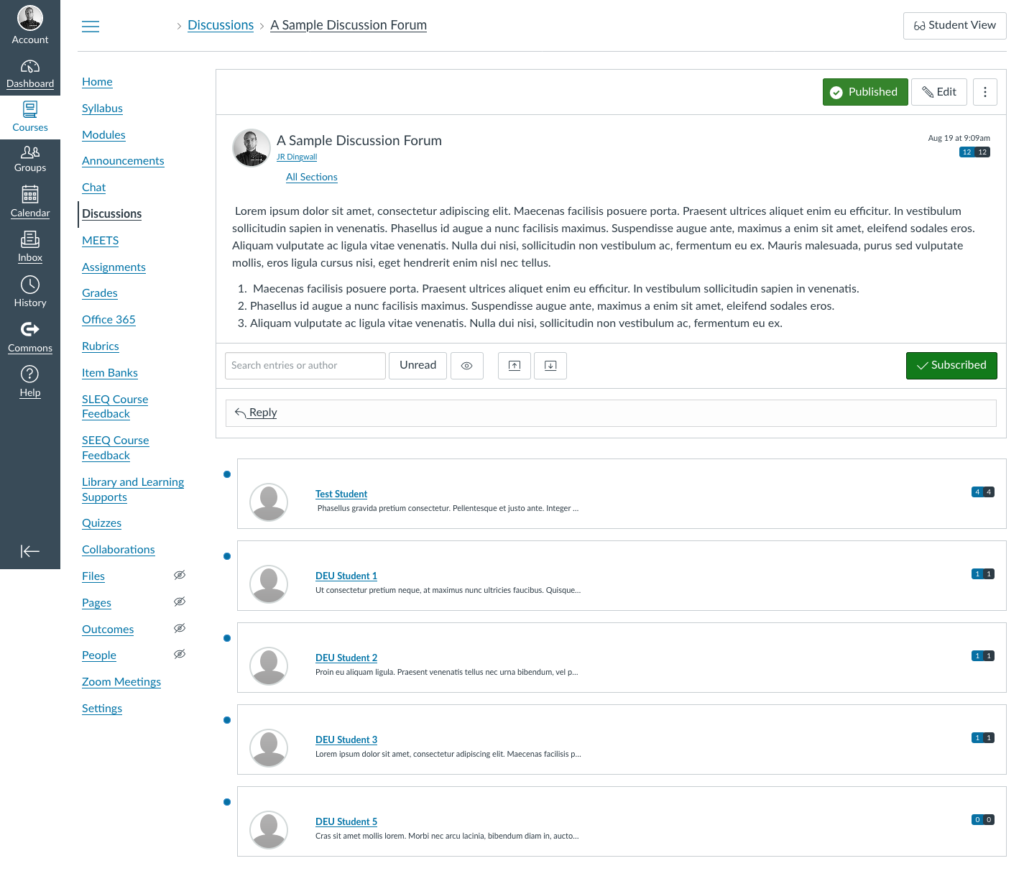Most online courses feature a Discussions element, and it is very common for this activity to be worth at least a portion of the student’s course grade. However, it can be challenging to assign a grade to student work in Discussions — and this is particularly true if you have Discussions frequently in your class (like a weekly thread), if you have a large class, or if you just have a particularly lively or busy Discussion board with many replies.
As an alternative to carefully reviewing and grading each Discussion post your students make, why not try Self-Assessment for online course Discussions? Self-Assessment is a great way to support student autonomy, build metacognition, and move away from rote responses on Discussion boards. Rather, you are aiming to have students think critically about why and how they are participating in the Discussions, and reflect upon how Discussion activities can enhance learning for them and their classmates.
This post will outline how to set this up in Canvas, offers a sample rubric, and presents a few things to consider when trying this approach.
Continue reading “Using Student Self-Assessment to Grade Discussions”










